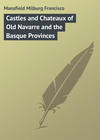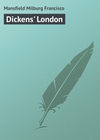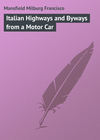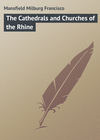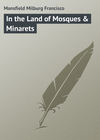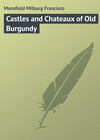Читать книгу: «The Automobilist Abroad», страница 6
Chapter II
A Little Tour In The Pyrenees
We had been touring France en automobile for many months – for business purposes, one might say, and hence had followed no schedule or itinerary, but had lingered by the way and made notes, and the artist made sketches, and in general we acquired a knowledge of France and things French that otherwise might not have been our lot.
The mere name of the Pyrenees had long had a magic sound for us. We had seen them at a distance, from Carcassonne and Toulouse and Pau, when we had made the conventional tour years ago, and had admired them greatly, to the disparagement of the Swiss Alps. This may be just, or unjust, but it is recorded here as a fact.
To climb mountains in an automobile appealed to us as a sport not yet banal or overdone, and since Switzerland – so hospitable to most classes of tourists – was treating automobilists badly just at the time, we thought we would begin by making the itinerary of the "Coupe des Pyrénées;" then, if we liked it, we could try the French Alps in Dauphiné and Savoie, delightful and little-known French provinces which have all the advantages of Switzerland and few of its disadvantages, inasmuch as the inhabitants of the valley hamlets and mountain towns have not become so commerçant as their Swiss brothers.
In August, 1905, was organized, by La Vie en Grand Air and La Dépêche de Toulouse, a great contest for touring automobiles, for an award to be known as the "Coupe des Pyrénées."
As a work of art the "Coupe des Pyrénées" is far and away ahead of most "cups" of the sort. It was the work of the sculptor, Ducuing, and the illustration herewith will show some of its charm. The "coupe" itself has disappeared from mortal view, it having been stolen from an automobile exposition in London.
The trials was intended to develop that type of vehicle best suited to touring, and in every way the event was a great success. The itinerary covered the lovely mountain roads from the Mediterranean to the Atlantic, and was the immediate inspiration for the author of this book to follow along the same trail. It is one of the most delightful excursions to be made in all France, which is saying that it is one of the most delightful in all the world.
We took our departure from Toulouse, as did the participants in this famous trial of the year before. Toulouse, the gay capital of the gay province of old Languedoc, has abounding attractions for the tourist of all tastes, though it is seldom visited by those who, with the first swallows of spring-time, wing their way from the resorts of the Riviera to Biarritz.
Toulouse has many historic sights and monuments, and a cuisine which is well worth a trip across France. What with truffles and the famous cassoulet and the chapons fins de Toulouse one forgets to speak of anything else on the menu, though the rest will be sufficiently marvellous.
There are three "leading" hotels in Toulouse catering for the automobile tourist. According to report they are all equally good. We chose the Capoul, on the Square Lafayette, and had no cause to regret it. We dined sumptuously, slept in a great ducal sort of an apartment with a hygiénique bedstead (a thing of brass openwork and iron springs) tucked away in one corner, full fifteen paces from the door by which one entered – "Un bon kilomètre encore," said the garçon de chambre, facetiously, as he showed us up. It promised airiness, at any rate, and if we were awakened at four in the morning by the extraordinarily early traffic of the city what did it matter, since automobiles invariably take early to the road.
It's worth stating here that the café au lait at six A. M. at the Hôtel Capoul was excellent. Frequently hotel coffee in the morning in France (at no matter what hour) is abominable. Usually it is warmed over from the night before. No wonder it is bad!
Toulouse delayed us not on this occasion. We had known it of old; so we started a little before seven on a brilliant September morning, just as the sun was rising over the cathedral towers and strengthening the shadows on the tree-lined boulevard which leads eastward via Castlemaudry to the walled city of Carcassonne, ninety-six kilometres away. The road-books say of this route;
"Pl. Roul. puis Ond Tr. Pitt." This freely translated means that the road is at first flat, then rolling and hilly, but very picturesque throughout. Castlemaudry delayed us not a moment, except to extricate ourselves from a troop of unbridled, unhaltered little donkeys being driven to the market-place, where there was a great sale of these gentle little beasts of burden. Pas méchant, these little donkeys, but stubborn, like their brethren elsewhere, and it was exceedingly difficult to force our way through two hundred of them, all of whom wiggled their ears at us and stood their ground until their guardians actually came and pushed them to one side. "You can often push a donkey when you can't pull him," they told us, a fact which was most apparent, though unknown to us previously. We arrived at Carcassonne in time for lunch, which we had always supposed was called déjeuner in France, but which we learned was here called dîner, the evening meal (at the fashionable hour of eight) being known as souper, though in reality it is a five-course dinner.
Carcassonne was a disappointment. Imagine a puffed-up little metropolis of twenty-five thousand souls with all the dignity that half a dozen pretentious hotels and gaudy cafés can give it; not very clean, nor very well laid out, nor very ancient-looking, nor very picturesque. Where was the Carcassonne of the frowning ramparts, of the gem of a Gothic church, and of the romance and history of which all school-books are filled?
"Oh! You mean la Cité," said the buxom hostess of our hotel. (They are always buxom hostesses in books, but this was one in reality.) Well, yes, we did mean la Cité, if by that name the referred to the old walled town of Carcasonne, la ville la plus curieuse de France, un monument unique au mond.
It is but a short kilometre to reach la Cité from the Ville Basse, as the modern city of Carcassonne is known. Once within the double row of walls, flanked by more than fifty towers, any preconceived ideas that one may have had of what it might be like will be dispelled in air. It is the most stupendously theatrical thing yet on top of earth, unless it be the sad and dismal Pompeii or poor rent Les Baux, in Provence.
The history of this wonder-work cannot be compressed into a few lines. One can merely emphasize its marvellous attractions, so that those who are in the neighbourhood may go and study it all out for themselves. It will be worth whole volumes on history and architecture for the earnest student to see these things. Among all the authorities who have proclaimed the magnificent attractions of Carcassonne the words of Viollet-le-Duc are as convincing as any. He says: "In no part of Europe is there anything so formidable, nor at the same time so complete, as the eleventh, twelfth, and thirteenth century fortifications of Carcassonne."
We stayed a full day at Carcassonne, and reached the frowning battlements of the Eglise St. Nazaire, at Béziers, at just two by the clock. This is the hour when all the commis-voyageurs, who may have taken lunch at the Hôtel du Nord, are dozing over their café and petites verres, and the patron and patronne of the hotel are making preparations for their early afternoon siesta, an attribute of all the Midi of France, as it is of Spain.
Nothing loath, the kitchen staff, spurred on by the patron (all thoughts of his siesta having vanished), turned out a most excellent lunch, hors d'œuvres, fresh sardines, omelette, cotelette d'agneau with pommes paille, delicious grapes, and all you wish of the red or white vin du pays. All for the absurd sum (considering the trouble they were put to) of three francs each. No "doing" the automobilist here; let other travellers make a note of the name!
Béziers is altogether one of the most remarkably disposed large towns of the south of France. Its storied past is lurid enough to please the most bloodthirsty, as is recalled by the history of its fortress-church of St. Nazaire, now the cathedral. For the rest the reader must hunt it out in his guide-book. We were doing no lightning tour, but we were of a mind to sleep that night at Perpignan, approximately a hundred kilometres farther on.
Southward our road turned again, through Narbonne, which, both from its history and from its present-day importance, stands out as one of the well-remembered spots in one's itinerary of France. It is full of local colour; its bridge of houses over its river is the delight of the artistic; its Hôtel de Ville and its cathedral are wonders of architectural art; and, altogether, as the ancient capital of an ancient province, one wonders that a seventeenth-century traveller had the right to call it "cette vilaine ville de Narbonne."
All the way to Perpignan the roads were terrifically bad, being cut up into great dusty ruts by many great carts and drays hauling wine-pipes to the railway stations. The traffic is enormous, for it is the wines of Roussillon that are shipped all over France for blending with and fortifying the weaker vintages, even those of the Gironde.
Dusty in dry weather, and chalky mud in wet, are the characteristic faults of this hundred kilometres or more of Herault roadway which one must cross to gain the shadow of the Pyrenees. There seems to be no help for it unless cobblestones were to be put down, which would be a cure worse than the disease.
Perpignan is the most entrancing city between Marseilles and Barcelona. It has many of the characteristics of both, though of only thirty thousand inhabitants. The old fortifications, which once gave it an aspect of mediævalism, are now (by decree of 1903) being torn down, and only the quaintly picturesque Castillet remains. The rest are – at the present writing – a mere mass of crumbled bricks and mortar, and a real blemish to an otherwise exceedingly attractive, gay little city. The automobile garages are all side by side on a new-made street, on the site of one line of the old fortifications, and are suitable enough when found, but no directions which were given us enabled us to house our machine inside of half an hour's time after we had entered the town. Our hotel, unfortunately, was one of the few that did not have a garage as an adjunct of the establishment. In other respects the Hôtel de la Poste was a marvel of up-to-dateness. The sleeping-rooms were of that distinction known in France as hygiénique, and the stairways and walls were fire-proof, or looked it. One dined in a great first-floor apartment with a marble floor, and dined well, and there was ice for those who wanted it. (The Americans did, you may be sure.)
Perpignan is possessed of much history, much character, and much local colour of the tone which artists love, and above all a certain gaiety and brilliancy which one usually associates only with Spain.
There is what might be called a street of cafés at Perpignan, not far from the Castillet. They are great, splendid establishments, with wide, overhung, awninged terraces, and potted plants and electric lights and gold and tinsel, and mixed drinks and ices and sorbets, and all the epicurean cold things which one may find in the best establishment in Paris. These cafés are side by side and opposite each other, and are as typical of the life of the town as is the Rambla typical of Barcelona, or the Cannebière of Marseilles. They are dull enough places in the daytime, but with the hour of the apéritif, which may be anywhere between five and eight in the afternoon, they wake up a bit, then slumber until nine or nine-thirty, when gaiety descends with all its forces until any hour you like in the morning. They won't think of such a thing as turning the lights out on you in the cafés of Perpignan.
From Perpignan we turned boldly into the cleft road through the valley of the Têt, via Prades and Mont Louis to Bourg-Madame, the frontier town toward Spain, and the only decent route for entering Spain by automobile via the Mediterranean gateway.
Bourg-Madame is marked on most maps, but it is all but unknown of itself; no one thinks of going there unless he be touring the Pyrenees, or visiting Andorra, one of the unspoiled corners of Europe, as quaint and unworldly to-day as it ever was; a tiny republic of very, very few square kilometres, whose largest city or town, or whatever you choose to call it, has but five hundred inhabitants.
If one is swinging round the Pyrenean circle he goes on to Porte, where, at the Auberge Michette, he will learn all that is needful for penetrating into the unknown darkest spot in Europe. We thought to do the journey "en auto," but on arrival at Porte learned it was not to be thought of. A sure-footed little Pyrenean donkey or mule was the only pathfinder used to the twistings and turnings and blind paths of this little mountain republic, where the people speak Spanish, and religion and law are administrated by the French and Spanish authorities in turn.
It's a week's travel properly to visit Andorra and view all its wild unworldliness, so the trip is here only suggested.
We took up our route again, crossing the Col de Puymorans (1,781 metres), and dropped down on Hospitalet, which also is printed in large black letters on the maps, but which contains only 148 inhabitants, unless there have been some births and no deaths since this was written.
From Hospitalet we were going down, down, down all of the time, the valley road of the Ariége, dropping with remarkable precipitation.
In eighteen kilometres we were at Aix-les-Thermes. The guide-books call it "une jolie petite ville," and no one will dispute it, though it had no charms for us; we were more interested in routes and roads than in mere watering-places, and so, beyond a stop for gasoline for the motor, not having been able to get any for the last fifty kilometres, still following the valley of the Ariége, we arrived at Foix for lunch, at the most excellent Hôtel Benoit, just as the ice was being brought on the table and the hors d'œuvres were being portioned out.
Taken all in all, Foix was one of the most delightful towns we found in all the Pyrenean itinerary. It is quite the most daintily and picturesquely environed town imaginable, its triple-towered château and its rocher looming high above all, and sounding a dominant note which carries one back to the days when Gaston Phoebus was the seigneur of Foix.
We planned to spend the night at the Hôtel de France at St. Girons, for it was marked down in the Guide-Michelin as being fitted with those modern refinements of travel which most of us appreciate, and there was furthermore a garage and a fosse, or inspection pit. We had need of the latter, for something was going wrong beneath the body of our machine which manifestly require being attended to without delay.
We took the long way around, twenty kilometres more out of our direct road, for novelty of driving our automobile through the Grotto of Mas D'Azil. We had been through grottoes before, the Grotte de Han in the north of France, the caves where they ripen Rochefort cheeses, the Mammoth Cave of Kentucky, and some others, but we had never expected to drive an automobile through one. The Grotte de Mas-D'Azil is much like other dark, damp holes elsewhere, and the only novelty is the magnificent road which pierces it. The sensation of travelling over this road is most weird, and it was well worth the trouble of making the experiment.
From St. Girons to St. Gaudens and Montrejeau is sixty odd kilometres. Nothing happened on the way except that the road was literally thronged with great slow-moving ox-teams transporting great logs down the mountainside to the sawmills in the lower valley.
Montrejeau was a surprise and a disappointment. It was a surprise that we should find such a winsome little hill-town, and such a very excellent hotel as was the Grand Hôtel du Parc, which takes its name from a tiny hanging garden at the rear; but we were disappointed in that for a mortal half-hour we tried to make our usually willing automobile climb up on to the plateau upon which the town sits. Three separate roads we tried, each three separate times, but climb the machine would not. No one knew why, the writer least of all, and he had been chauffeur and driver of that automobile for many long months, and had never found a hill, great or small, that it would not climb. Automobiles are capricious things, like women, and sometimes they will and sometimes they will not. At last, after the natives had had sufficient amusement, and had told us that they had seen many an automobile party go without lunch because they could not get up that steep little kilometre, we found a sort of back-door entrance which looked easy, and we went up like the proverbial bird. It was not the main road into town, and it took some finding. The writer hopes that others who pass this way will be as successful. Montrejeau, with its three steep streets, its excellent hotel (when you finally got in touch with it), its old-world market-house, and its trim little café-bordered square, will be long remembered.
We debated long as to whether we should drop down to Luchon, and come around by Bagnerres-de-Bigorre or not, but since they were likely to be full of "five-o'-clockers" at this season we thought the better of it, and left them entirely out of our itinerary. When one wants it he can get the same sort of conventionality at Ermenonville, and need not go so far afield to find it.
We arrived at Tarbes, at the Hôtel des Ambassadeurs, late on Sunday afternoon. The name of the hotel augured well for good cheer, and on the whole we found it satisfactory enough. One of its most appealing features is the fact that the kitchens and the garage were once a convent. It has undergone a considerable change since then, but it lent a sort of glamour to things to know that you were stabling your automobile in such a place.
Tarbes is a great busy, overgrown, unlovely big town, which flounders under the questionable dignities of being a station of an army corps and a préfecture: Bureaucracy and Officialdom are writ large all over everything, and a poor mortal without a handle to his name, or a ribbon in his buttonhole, is looked upon as a sort of outcast when he enters a café, and accordingly he waits a long time to be served.
We got out of Tarbes at a très bonne heure the next morning without a regret, headed for Pau. All of us had always had an affection for Pau, because, in a way, we admired old Henri Quatre, even his rascality.
We found Pau, too, a great, overgrown, fussy town, a bit more delightfully environed than Tarbes, but still not at all what we had pictured it. We knew it to be a tourist resort, but we were hardly prepared for the tea-shops and the "bars" and the papers – in English and "American," as a local newsdealer told us when we went to him to buy the inevitable picture postcards.
We found out, too, that Pau has long held a unique position as the leading hunting centre on the Continent. It costs sixty francs a day for the hire of a saddle-horse, and from 350 francs to four hundred francs for the month – certainly rather dear. There are, as a rule, from thirty to forty hunters available for hire each year, but many of them are reserved by old stagers. Of privately owned horses following the hunt, the number would usually somewhat exceed two hundred. The hounds meet three times a week, and the municipality of Pau shows its appreciation of the good that hunting does for the Pyrenees resort by voting a subsidy of five thousand francs.
What history and romance there is about Pau is pretty well blotted out by twentieth-century snobbism, it would seem.
One learns that Pau was the seat of a château of the princes of Béarn as early as the tenth century. Its great splendour and importance only came with the establishment here of the residence of Gaston IV., Comte de Foix, the usurper of the throne of Navarre in 1464. In his train came a parliament, a university, an academy, and a mint. Finally came the birth of Henri Quatre, and one may yet see the great turtle-shell used by the afterwards gay monarch for a cradle. These were gay times for Pau, and the same gaiety, though of a forced nature, exists to-day with the throngs of English and Americans who are trying hard to make of it a social resort. May they not succeed. One thing they have done is to raise prices for everything to everybody. This is bad enough to begin with, and so with this parting observation Pau is crossed off the list.
There are eight highroads which cross the frontier passes from France into Spain, and two lines of railway, one along the border of the Atlantic and Hendaye, and the other following the Mediterranean coast to Barcelona.
"Il n'y a plus de Pyrénées," we were told as we were leaving Pau. It seemed that news had just been received that in fourteen hours a Spanish aeronaut had covered the 730 kilometres from Pau to Grenada "comme les oiseaux." Truly, after this, there are no more frontiers.
After Pau our route led to Mauléon (seventy-two kilometres) via Oloron, straight across Béarn, where the peasants are still of that picturesque mien which one so seldom sees out of the comic-opera chorus. One reads that the Béarnais are "irascible, jealous, and spirituel."
This is some one's opinion of times long passed, but certainly we found nothing of the kind; nothing indeed different from all the folk of the South who dawdle at their work and spend most of their leisure energetically dancing or eating.
Mauléon, known locally as Mauléon-Licharre to distinguish it from Mauléon-Barousse, is the douane station for entering France from Spain (Pampelune) via St. Jean-Pied-de-Port and St. Beat, neither of the routes much used, and not at all by automobiles.
A typical little mountain town, Mauléon is the chef-lieu of the Arrondissement, and the ancient capital of the Vicomté de Soule. It has an excellent hotel, allied to the Touring Club de France (Hôtel Saubidet), where one dines well off the fare of the country with no imitation Parisian dishes. There is a sort of a historical monument here, the Château de Mauléon (Malo-Leone – Mauvais Lion – Wicked Lion: the reader may take his choice) of the fifteenth century, which surrounds itself accommodatingly with a legend which the native will tell you, if asked.
There is no great accommodation for automobiles at Mauléon, and one can only buy oil and gasoline by going to a man named Etcheberrigary for it. His address is not given, but any one will tell you where he lives. They may not recognize your pronunciation, but they will recognize your dilemma at once and point the way forthwith.
It was forty-one kilometres to St. Jean-Pied-de-Port, over an "all-up-and-down-hill" road, if there ever was one – up out of one river valley and down into another all the way until we struck the road by the banks of the Nive and approached the town.
St. Jean-Pied-de-Port takes its name from its proximity to one of the Franco-Spanish gateways through the Pyrenees.
It is in danger of becoming a resort, since the guide-books already announce it as a station climatique. Its Basque name of Donajouana, or Don Ilban-Garici, ought, however, to stop any great throng from coming.
It lies directly at the foot of the Col de Roncevalles leading into Spain (1,057 metres). The pass has ever been celebrated in the annals of war, from the days of the Paladin Roland to those of Maréchal Soult's attack on the English at Pampelune.
Considering that St. Jean-Pied-de-Port boasts of only fourteen hundred inhabitants, and is almost hidden in the Pyrenean fastness, one does very well within its walls. There is a railway to Bayonne, the post, telegraph, a pharmacy, and a Red Cross station, and the wants of the automobilist are attended to sufficiently well by the local locksmith. The Hôtel Central, on the Place du Marché, is vouched for by the Touring Club. It has a salle des bains and other useful accessories often wanting in more pretentious establishments, a dark room for camera fiends, a pit for automobiles, and electric lights. For all this you pay six franc a day. "Pas cher!"
Bayonne, through the Basque country, is fifty odd kilometres distant, a gentle descent all the way, down the valley of the Nive.
The Basques are a picturesque and lovable people, and they have kept their characteristics and customs bright and shining through many centuries of change round about them.
They love the dance, all kinds of agile games like the jeu de paume and pelota, and will dance for three days at a fête with a passion which does not tire. Even to-day the Basque thinks more of a local fête than he does of anything else, and will journey fifteen or twenty kilometres afoot – if he can't get a ride – to form a part of some religious procession or a tournée de paume.
Cambo, midway between St. Jean-Pied-de-Port and Bayonne, is a tiny spring and bath resort trying hard to be fashionable. There are many villas near-by of wealthy "Basques-Americains," from the Argentine.
The Basques, at least the Basques-Français, are a disappearing factor in the population of Europe. It is said there are more Basques in the Argentine Republic than in the Republic of France, and all because of the alienation of the Basques by Louis XIV. when he married Marie-Thérèse and her 500,000 écus of dot. Since 1659 the real Basque, he or she of the fine teeth, has been growing beautifully less in numbers, both in France and in Spain.
A certain fillip was given to Cambo by the retreat here of Edward Rostand, the author of "Cyrano" and "L'Aiglon." In his wake followed litterateurs and journalists, and the fame of the hitherto unworldly little spot – sheltered from all the winds that blow – was bruited abroad, and the Touring Club de France erected a pavilion; thus all at once Cambo became a "resort," in all that the name implies.
A mécanicien has not yet come to care for the automobilist in trouble, but the locksmith (serrurier) will do what he can and charge you little for it. Gasoline is high-priced, fifty sous a bidon.
Bayonne, with its tradition, its present-day prosperity, and its altogether charming situation, awaited us twenty odd kilometres away, and we descended upon its excellent, but badly named, Grand Hotel just at nightfall. There's another more picturesquely named near by, and no doubt as excellent, called the Panier-Fleuri. We would much rather have stopped at the latter, – if only on account of its name, – but there was no accommodation for the automobile. M. Landlord, brace up!
Bayonne is a fortress of the first class, and commands the western gateway into Spain. Its brilliant aspect, its cosmopolitanism, and its storied past appealed to us more than did the attractions of its more fastidious neighbour, Biarritz. One can see a better bull-fight at Bayonne than he can at Biarritz, where his sport must consist principally of those varieties of gambling games announced by European hotel-keepers as having "all the diversions of Monte Carlo." Bull-fighting is forbidden in France, but more or less mysteriously it comes off now and then. We did not see anything of the sort at Bayonne, but we had many times at Arles, and Nimes, and knew well that when the southern Frenchman sets about to provide a gory spectacle he can give it quite as rosy a hue as his Spanish brother.
Biarritz called us the next day, and, not wishing to be taken for dukes, or millionaires, or chauffeurs and their friends out on a holiday, we left the automobile en garage, and covered the seven kilometres by the humble tramway. Be wise, and don't take your automobile to a resort like Biarritz unless you want to pay.
It's a long way from the Pont Saint-Esprit at Bayonne to the plage at Biarritz, in manners and customs, at any rate, and the seeker after real local colour will find more of it at Bayonne than he will at its seaside neighbour, where all is tinged with Paris, St. Petersburg, and London.
The Empress Eugénie, or perhaps Napoleon III., "made" Biarritz when he built the first villa in the little Basque fishing-village, which had hitherto known neither courts nor coronets. There's no doubt about it; Biarritz is a fine resort of its class, as are Monte Carlo and Ostende. One can study human nature at all three, if that is what he is out for; so, too, he can – the same sort – on Paris's boulevards.
The month of October is time for the gathering of the fashionables and elegants of all capitals at Biarritz. All the world bathes together in the warm waters of the Plage des Basques, and the sublime contrast of the Pyrenees on one hand, and the open sea and sky on the other, give a panorama of grandeur that few of its competitors have.
The visitors to Biarritz daily augment in numbers, and, since it had been a sort of neutral trysting-ground for the King and Queen of Spain before their marriage, and since the seal of his approval has been given to it by Edward VII. of England (to the great disconcern of the Riviera hotel-keepers), it bids fair to become even more popular.
From Bayonne to the Spanish frontier it is thirty kilometres by the road which runs through the Basque country and through St. Jean-de-Luz, a delightful little seaside town which has long been a "resort" of the mildly homeopathic kind, and which, let us all hope, will never degenerate into another Nice, or Cannes, or Menton. The great event of its historic past was the marriage here of Louis XIV. with the Infanta Marie-Thérès on the sixth of June, 1660, but to-day everything (in the minds of the inhabitants) dates from the arrival of the increasing shoals of visitor from "brumeuse Angleterre" in the first days of November, with the added hope that this year's visitors will exceed in numbers those of the last – which they probably will.
Покупайте книги и получайте бонусы в Литрес, Читай-городе и Буквоеде.
Участвовать в бонусной программе












